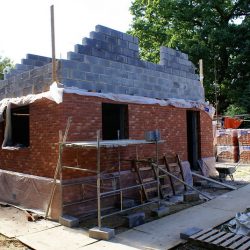Description
A Domestic EPC – short for Energy Performance Certificate – is a document outlining how energy efficient a specific property is. They are required by law for all new residential buildings, as well as residential buildings that are being sold or leased out. With regards to the last two, the certificate must be obtained before the sales/letting process begins.
When we issue a domestic EPC, we will grade the property from A-G, with A being the most energy efficient rating. In order to receive higher grades, the dwelling needs to have a low CO2 impact on the environment, and the EPC certificate will also tell you ways in which you can further reduce the impact that the dwelling has.
European Directive and UK legal status
Energy Performance Certificates (EPCs) are required for almost all buildings when they are constructed, sold, or rented out under Article 7 of the Energy Performance of Buildings Directive (2002/91/EC), which all European Union member states are required to implement.
The intention of EPCs in the Directive is to allow potential building owners and occupiers to understand the energy efficiency of the buildings they are thinking of occupying. From 1 October 2008, an EPC will be required whenever a building in the social or private rented sectors is let to a new tenant in accordance with UKs Energy Performance of Buildings (Certificates and Inspections) Regulations 2007/991, Home Information Packs (HIP) Regulations 2007 and Building Regulations 2000 Part L1B for existing dwellings in England and Wales and the Housing (Scotland) Act 2006.
RdSAP
Reduced Standard Assessment Procedure (RdSAP) is the new Government-approved standardized system for undertaking an energy survey on an existing dwelling. Full SAP surveys are only required on new builds to demonstrate compliance for dwellings with Part L1A of the Building Regulations 2000.
RdSAP is an industry-agreed standard set of data items and a standard way of assessment where a full SAP would not be appropriate because of the difficulty in assessing attributes such as U-Values of wall construction and insulation etc. RdSAP is designed to comply with the UK Building Regulations 2000 Part L1B for existing dwellings.
These surveys can only be carried out by a suitably qualified and accredited domestic energy assessor (DEA) and lead to the generation of either:-.
- Energy Performance Report – EPR
- Energy Performance Certificate – EPC
What is the difference between an EPR and an EPC?
Both the EPR and EPC’s purpose is to record how energy efficient and carbon emission efficient a property is as a building. The certificate provides a rating of the energy efficiency and carbon emissions of a building from A to G, where A is very efficient and G is very inefficient. The energy-efficiency rating is a measure of a home’s overall efficiency based on standard occupancy energy use, i.e. not specific to the tenants presently residing. The higher the rating, the more energy-efficient the home is, and the lower the fuel bills are likely to be.
The environmental impact rating is a measure of a home’s impact on the environment in terms of carbon dioxide (CO2) emissions – the higher the rating, the less impact it has on the environment. Both EPR and EPCs are exactly the same with the exception that EPCs must be registered on the government’s Landmark database. An EPR is for reference purposes, i.e. not a certificate, and will not satisfy the requirements of current regulations.
How long is an EPC valid?
An EPC is valid for 10 years unless significant alterations are made to the fabric or heating/hot water plant, e.g. a Green Deal package has been undertaken or extension added.
Properties excluded from needing an EPC
- Very large dwellings > 450 m²
- Multi-residential properties e.g. nursing homes
- Common areas to Flats, Houses in Multiple Occupation (HMOs) and Sheltered Accommodation
- Mixed commercial and domestic use.





